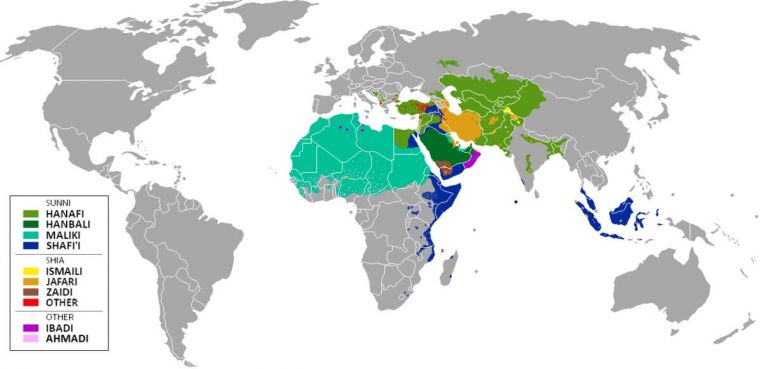Sunnis vs. Shiites: Islamic rift rooted in conflict over political leadership, not religious doctrine

Saudi Arabia and Iran—two powerful Muslim nations—are currently embroiled in a raging conflict with far-reaching consequences for the region and whose origins date back centuries ago.
The conflict rose on Sunday when Saudi Arabia declared it would sever all diplomatic ties with Iran after mobs stormed its diplomatic outposts in two Iranian cities.
The Iranians' anger was triggered by an announcement from Riyadh the day before that the Saudi government had executed a prominent Saudi opposition cleric Sheikh Nimr al-Nimr, who belonged to the Shiite branch of Islam whose heartland is Iran.
The rivalry between Saudi Arabia and Iran has its roots in a rift between the Sunni and Shia disciplines of Islam which began 1,400 years ago, according to NBC News.
Saudi Arabia is recognised as the centre of Sunni Islam, the larger sect, while Iran is the heart of Shia Islam.
To fully understand the conflict between the two Muslim powers, NBC News pointed out key facts that led to the split between the two Islamic sects.
The schism is traced to 632 A.D., when the Islamic Prophet Muhammad died and a debate began about who should be his successor.
Both factions agree that Allah is the one true God and that Muhammad was his messenger. However, one group—the Shiites—believe that Muhammad's successor should be someone in his bloodline. The other group—the Sunnis—oppose since they believe that a pious individual should be the one to lead Muslims.
This showed that "the original schism between Islam's two largest sects was not over religious doctrine," according to Robin Wright, a joint fellow at the non-partisan U.S. Institute of Peace and the Woodrow Wilson Center. "It was over political leadership," he pointed out.
Sunnis and Shiites do agree on some things. They both read the Quran, the sayings of their Prophet. Both believe Prophet Muhammad was the messenger of Allah. Moreover, both follow the five tenets of Islam: They fast during Ramadan, pledge to make a pilgrimage to Mecca, practice ritual prayer (which includes five prayers each day), give charity to the poor, and pledge themselves to their faith.
Their prayer rituals are almost the same, with slight variations: For example, Shiites will stand with their hands at their sides, Sunnis will put their hands on their stomachs, NBC News pointed out.
While similarities between the two sects are many, differences are deeply entrenched.
Aside from their principal difference on who should have succeeded the Prophet Muhammad, Sunnis and Shiites have different interpretation of Islam's schools of law. Shiites give humans the same exalted status as prophets in the Quran, often venerating clerics as saints. Sunnis do not.
About 85 to 90 percent of the world's more than 1.6 billion Muslims are Sunnis. Shiites comprise just about 10 to 15 percent of all Muslims, with an estimated global population of less than 200 million.
Sunnis dominate the Muslim world, from West Africa to Indonesia. Although smaller in number, Shiites are centrally located, with a vast majority in Iran, predominance in Iraq and sizable populations in Syria, Lebanon and Yemen, according to NBC News.











